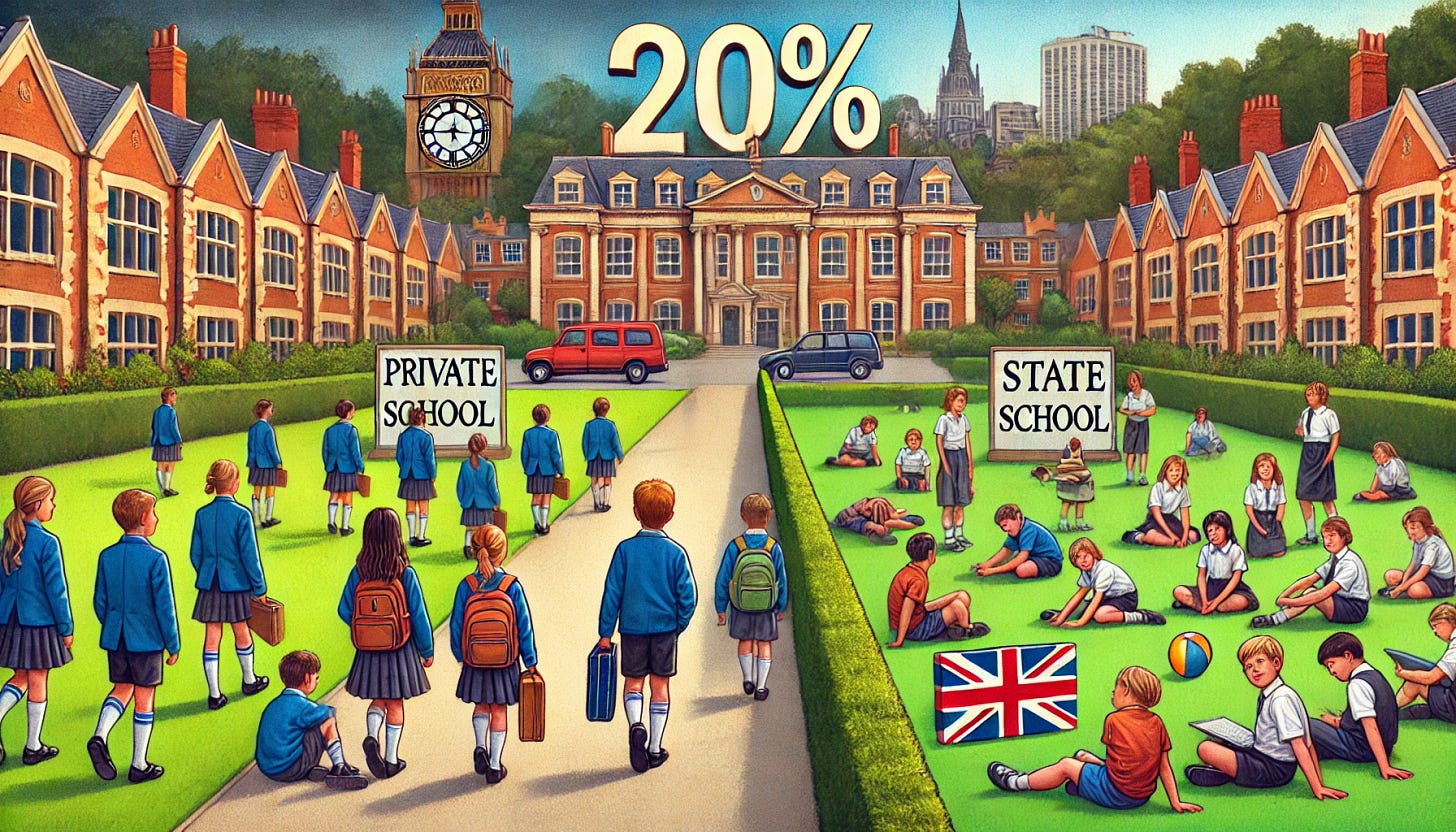The most important thing a parent can provide for a child, second only to unconditional love, is a good education.
I received a mix of private and state education, having been sent to a fee-paying preparatory school up to the age of 11. From that point on, I attended state schools.
Private, public, and state education have different meanings on each side of the Atlantic. In the United Kingdom, a public school is one where fees are paid. State education, on the other hand, is funded by taxes and is free to parents. To confuse matters further, “public education” and “private education” in the UK are essentially the same thing. I’m glad we cleared that up!
Parents have some choice when selecting the right school for their children, but only to a certain extent. For free state education, securing a place can feel like a lottery, as there are both good and poor state schools. The best schools in the area are always oversubscribed, meaning parents may have to settle for a school that is not their first (or even second) choice or is located far from home. In some cases, siblings a couple of years apart end up attending different schools, which might be miles apart.
The country also has a wide range of fee-paying schools, where parents cover the full cost of tuition, and the government contributes nothing. However, the government does save money by not having to educate these children in the state sector.
In January 2025, the newly elected Labour government imposed VAT (Value Added Tax) at a rate of 20% on all fee-paying schools. This means that, starting from the return after the Christmas holidays, parents must find an extra 20% to continue sending their children to the private school of their choice.
This so-called “education tax” was imposed partway through the academic year, which runs from September to September, with less than six months’ notice given.
The left-wing press in the United Kingdom celebrated VAT on fees as a victory, while the right-wing media decried it as a disaster.
There is a general perception that, in order to send a child to a fee-paying school, the parents must be wealthy and that an additional 20% is easy for them to afford. While this may be true for some families, it is certainly not the case for the majority.
Take our own experience as parents.
My wife and I chose to send our daughter to a fee-paying school because she was not thriving in her early years in the state sector. She was a square peg in a round hole.
After conducting research and visiting several schools, we decided on a Rudolf Steiner school in the southeast of the country. We were able to finance the fees for 10 years, and we are so glad we did. She loved the school, which suited her perfectly. Now in her mid-thirties, our daughter still talks about the school and expresses gratitude that we were able to send her there.
Does that make us rich? Certainly not—far from it.
My wife and I both worked full-time throughout that 10-year period, paying a mortgage at much higher interest rates than today while finding the fees for each term.
We made sacrifices to afford the fees. Over those 10 years, we had only one overseas holiday and spent the remaining years either at home or on budget holidays in the UK. We often opted for day trips instead. We spent holidays with family members, and dining out was a luxury we could rarely afford. Subscription television, such as Sky and Netflix, was in its infancy, and paying for it was never on our radar. In fact, as a family, we watched almost no television at all. By the end of the 10 years, we were fortunate to emerge with zero debt—just barely.
Other families with children in our daughter’s class faced similar challenges. Several took out second mortgages or other loans to pay for their children’s education, considering it essential for their future. I know of one family who finished repaying their fee loan 12 years after their child left full-time education. Their son wasn’t aware of the sacrifices his parents made until they proudly announced that they had finally finished paying off his schooling.
The Labour government and left-leaning media view fee-paying education as a luxury, justifying the addition of the 20% “education tax.” They assume that the so-called “rich” can easily afford it. As a result, school fees increased this week. For families less fortunate financially, the options are to find the additional tax money or withdraw their children and place them in state schools.
This shift will add more children to the state sector, costing the government (through local authorities) several thousand pounds per child per year, paid for by general taxation. While the new 20% VAT revenue will contribute to covering this cost, the extent depends on how many children move from private to state schools.
Some smaller fee-paying schools have already announced closures, having lost enough pupils to render their operations unsustainable. When these schools close, 100% of their pupils must be accommodated in state schools.
Education should be a choice. If parents choose to send their children to fee-paying schools, that is their right.
Taxing such education is an appalling decision by a new government that also recently removed the Winter Fuel Allowance from millions of pensioners.
Welcome to the education tax!



